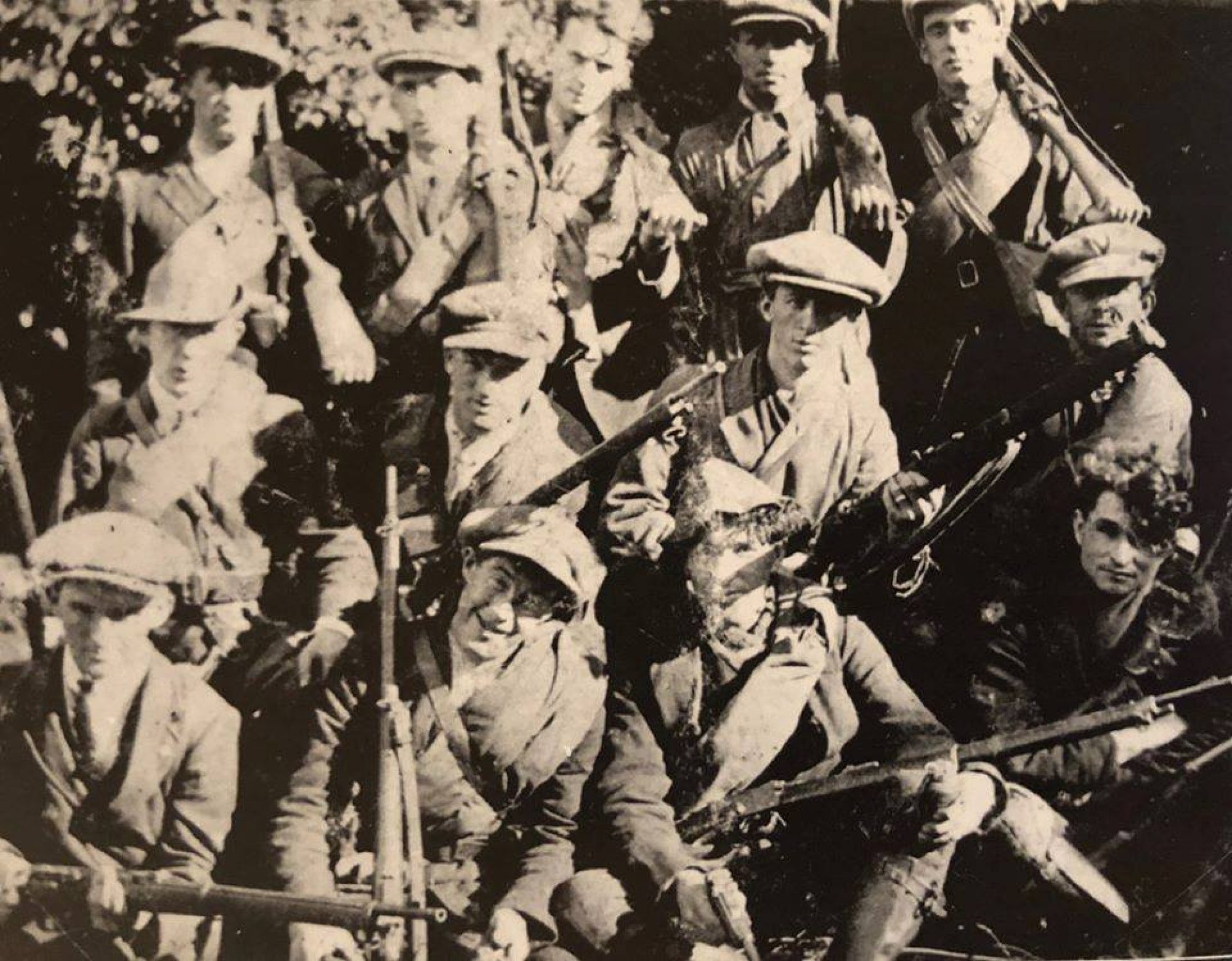In late April 1918 a car containing ‘several hundred pounds of gelignite explosives’ together with detonators, was travelling from Wexford town to Bunclody. The consignment was destined for Ryland quarry to be used for rock blasting operations. Four men occupied the car;
Mr. James Sinnott (Owner & Driver)
Mr. W.F. Barry (County Surveyor)
Mr. Thomas Treanor (Assistant County Surveyor)
Mr. Wm. Murphy (quarry overseer for the council)

Shortly after 12pm passing through Tombrick, the car was stopped by a group of four men, armed with revolvers and their faces partially covered by handkerchiefs. Mr. Thomas Treanor, had informed the local I.R.A HQ of the planned explosives delivery and subsequently provided them with an opportunity to obtain an important resource. The occupants of the car were ordered to dismount and proceed to Tombrick Wood, where they were kept under guard by two of the masked individuals. Meanwhile, the other two masked culprits made away in the car with the explosives, returning somtime later. Upon their arrival back the car was returned to its owner, Mr. Sinnott , who previously had expressed his concern to the raiders, as the vehicle was his livelihood. The masked men then made their escape on bicycles which had been previously placed. Accounts tell how the explosives were hidden in a tomb at Ballybrennan graveyard, 26km south of Tombrick and to the south-west of Enniscorthy Town. They would later be utilized to manufacture bombs. This is one of the earliest activities undertaken by the I.R.A in the county Wexford.

There are 3 factors to help determine the location of this event. Firstly, it took place in Tombrick. Second, that they were held in ‘Tombrick Wood’ and third that this wood ‘adjoins the road’. The most obvious location is along the road running through ‘Tombrack Wood’. However, this would not have been the primary route between Wexford and Bunclody. Instead that would have been following the route of the modern N80. Noticeably a small wood does exist in Tombrick along this primary route and could be considered the ‘Tombrick wood’ where the men were held. Whichever of the two maybe correct this event was a well planned operation where the men knew the surrounding area and utilized it to perform this ambush.

A year later in 1919 the explosives would be resurrected from the tomb, but were found to be frozen. Interestingly, the fixture for this was thawing, or cooking the gelignite on hot iron plates over an open fire! One of the cooks Joe O’ Brien, a tailor from the Duffry Gate, Enniscorthy, apparently suffered from headaches 35 years on, caused by the fumes of the nitro-glycerin. This particular catch of gelignite was found by some to be ‘undependable’ when used in later operations, perhaps because it was frozen or later ‘cooked’! The list below contains the names of the men who captured the explosives

References
Newspaper: The New Ross Standard, Friday 26th April 1918 ‘A Daring Act’ Page 4
Bureau of Military History Withness Statement: Sean Whelan (IRA), St. Senan’s Enniscorthy, Co.Wexford. Document #1294, P13
Bureau of Military History Withness Statement: Michael O Ciardubhain (Kirwan) (IRA), Enniscorthy, Co.Wexford. Document #1175, P8
Note: The image used in the introduction for this post shows a Dublin Metropolitan Police Officer and car not associated with the event and was used purely for illustrative purposes


Sir , do you have any information regarding the photo above this article such as location , date , etc ? The policeman in the photo is a DMP sergeant .
Thank you ,
Mark O Brien
LikeLike
Mark
I do not have that information to hand. It was intended to be used for illustrative purposes. I could try and obtain the source for you though if you wished.
Best
Barry
LikeLike
Mark
here is the link where I obtained the picture markpmobrien@gmail.com. https://www.businesspost.ie/ireland/cancellation-of-ric-event-shows-civil-war-politics-is-alive-and-well-83463b4d
Thanks for the comment and I have added a piece to the post on this.
Thanks
Barry
LikeLike